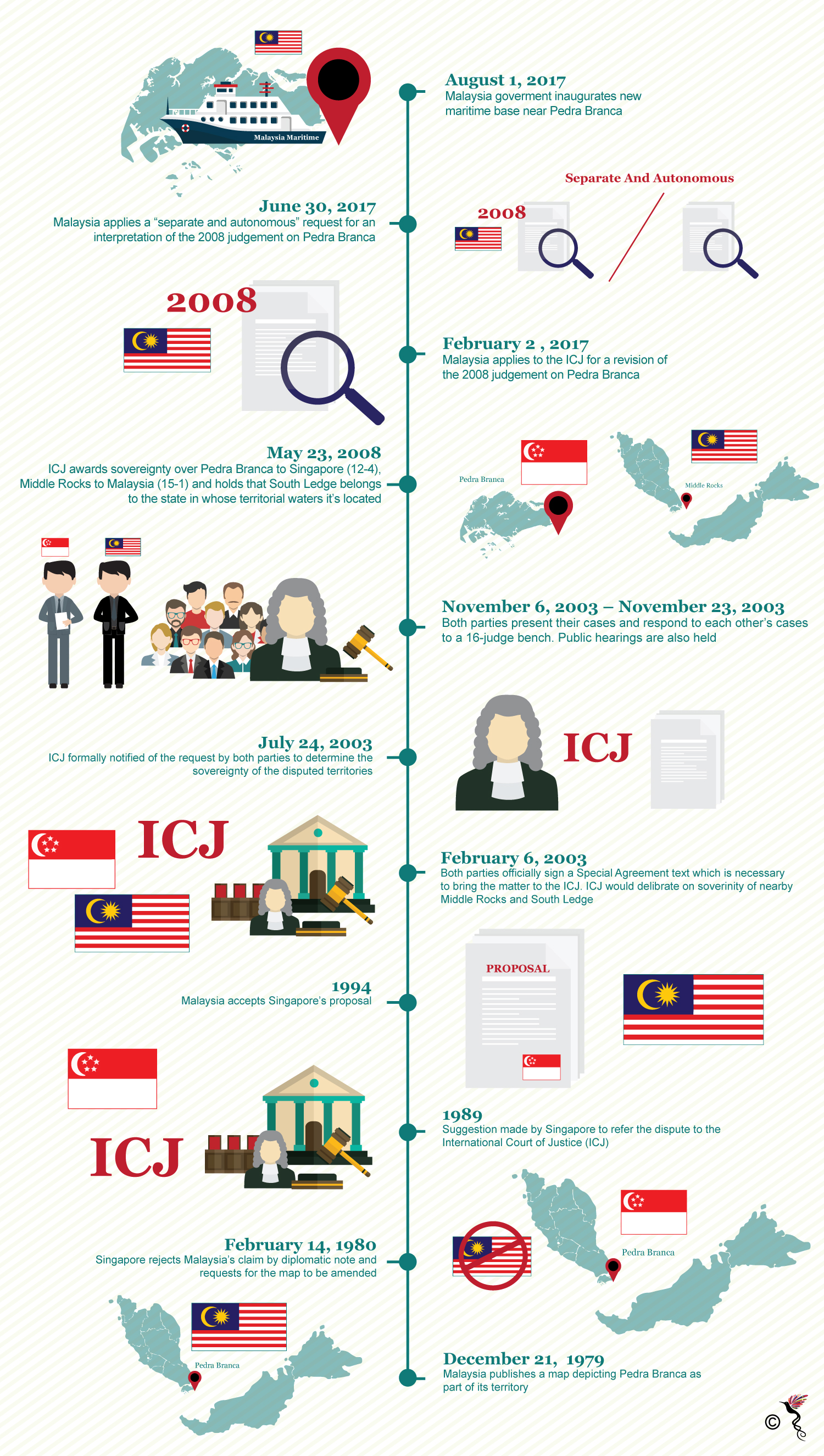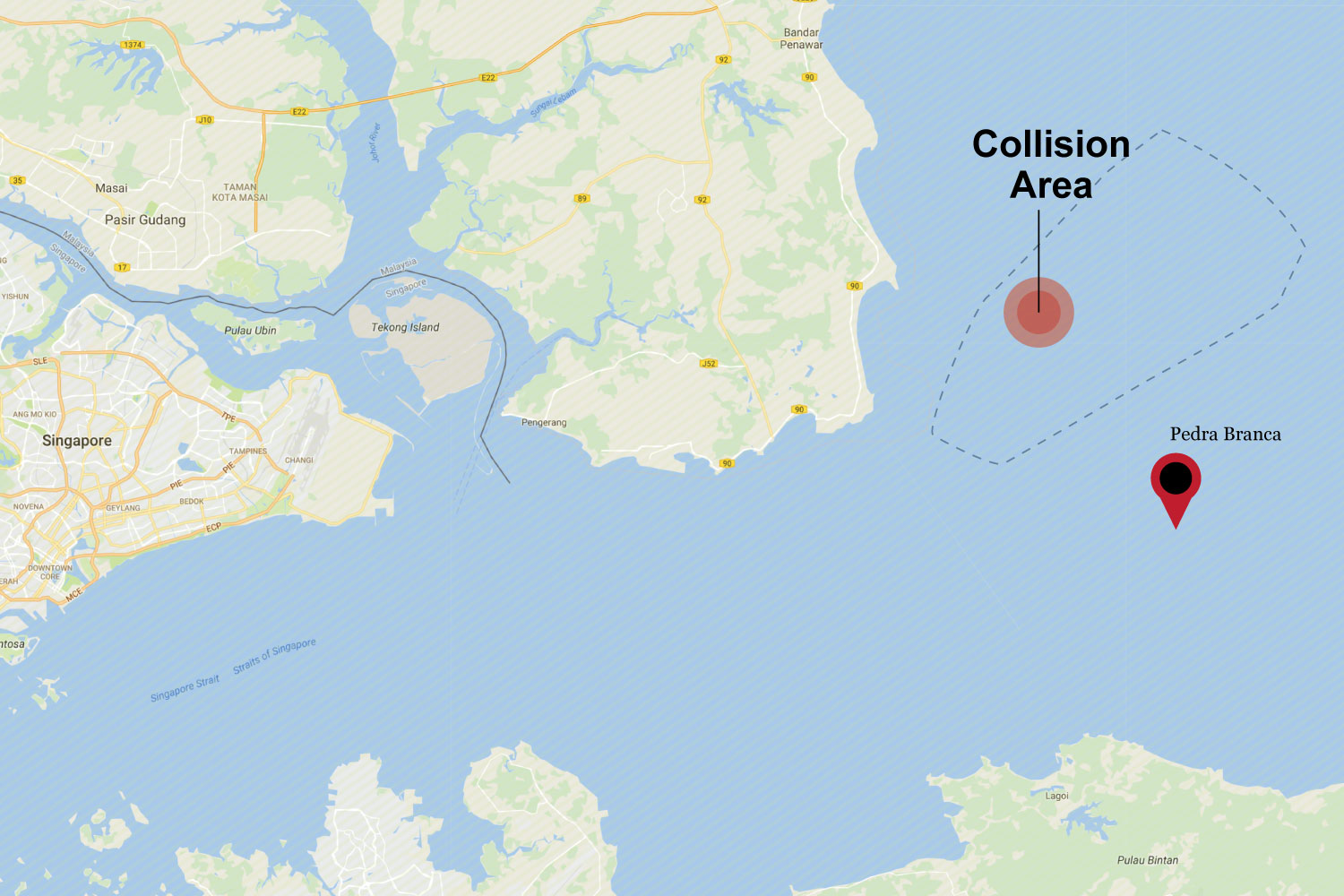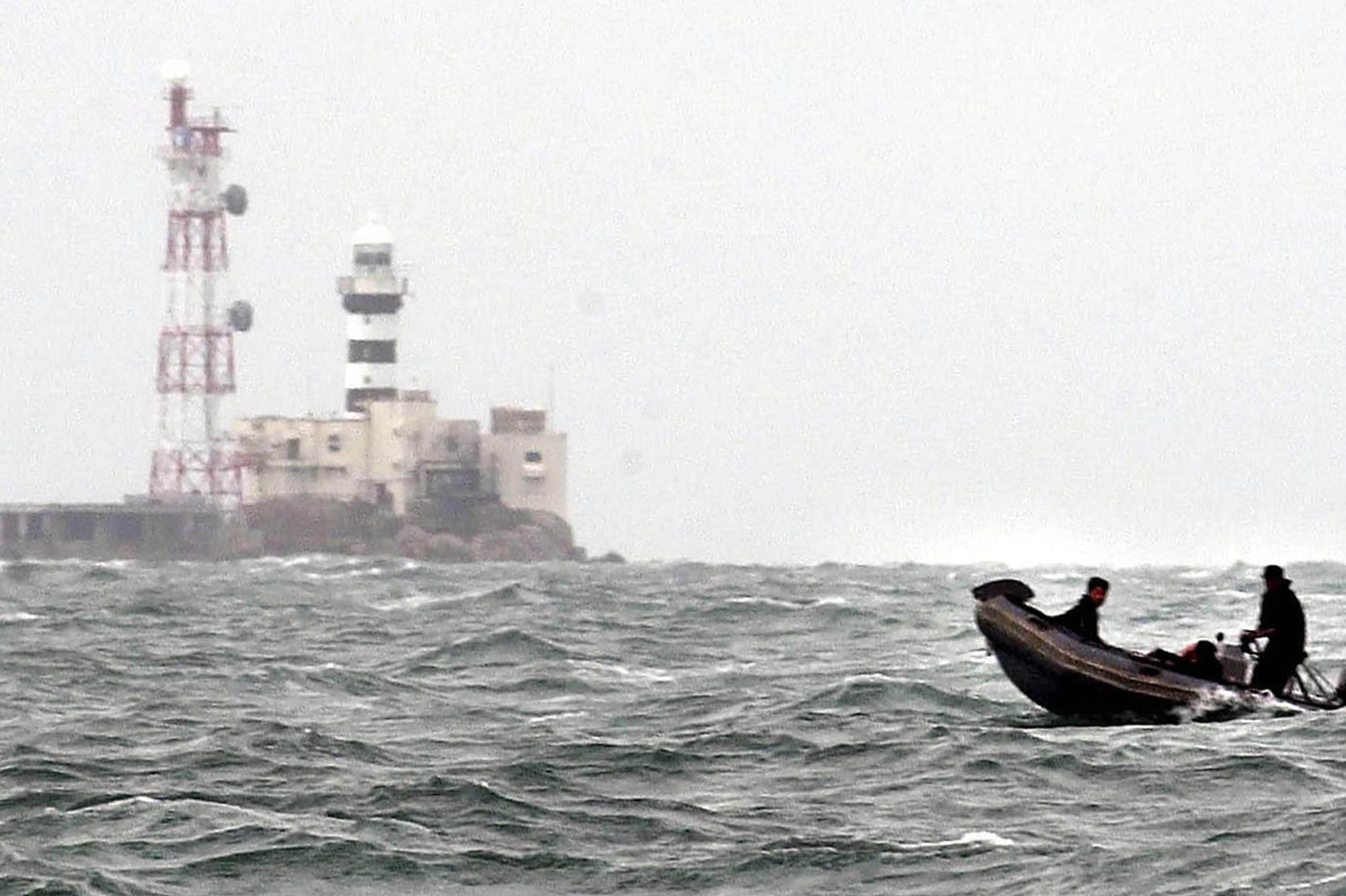As the world reacted with empathy and sorrow in light of the recent accident between USS John S. McCain and Liberian oil tanker, Alnic MC that left 10 sailors missing, there were faint signs of diplomatic arm-flexing between Malaysia and Singapore. Both claimed that the accident happened on their respective territorial waters and both claimed to be leading the search and rescue (SAR) operations.
The cause of the opposing contentions is an island roughly the size of a FIFA standard football pitch, named, Pedra Branca. It is also known as Batu Puteh which directly translates from Malay to mean “white rocks” and is the easternmost point of Singapore. Located 24 nautical miles east of Singapore and eight nautical miles south of the state of Johor in Malaysia, it is a rocky outcrop that was the site of a diplomatic tussle for its sovereignty between Malaysia and Singapore since 1979.
Both states finally decided to resolve the dispute at the International Court of Justice and the court, in its 2008 judgement, awarded Pedra Branca to Singapore. Also disputed were smaller outcrops in the surrounding region, Middle Rocks and South Ledge, the former awarded to Malaysia and the latter to the state in whose territorial waters it was located.

Timeline of Malaysia-Singapore territorial dispute over Pedra Branca, Middle Rocks and South Ledge.
Singapore claimed that they had exercised authority over Batu Putih by managing a lighthouse there, requiring Malaysian officials to obtain permits to visit the island and building a military broadcast station in the late 1970s. The inaction by the Malaysian government towards the actions of the island state lent further weight to the International Court of Justice (ICJ) decision to award sovereignty of the rocky feature to Singapore.
The recent accident, tragic as it may be has rekindled the bitterness of the dispute between the two nations. The issue of jurisdiction is yet to be coherently clarified by Singapore and Malaysia given that the crash occurred 4.5 nautical miles off the coast of the Malaysian state of Johor, close to Pedra Branca. The Malaysian Director-General of the Malaysian Maritime Enforcement Agency Zulkifli Abu Bakar, asserted that the crash occurred in Malaysian waters. He further rubbished reports that Singapore was leading the SAR operations but stated that the neighbouring country was conducting its own search within the area.
Meanwhile, reporters were told by Chief Executive of the Maritime Port Authority of Singapore that the island state was leading the SAR operations and will continue to deploy more assets to aid the operation. Press statements from the Maritime Port Authority of Singapore also mention unequivocally that the incident occurred in Singaporean territorial and indicate its proximity to Pedra Branca.
Recently, in February of this year, Malaysia sought a revision of the ICJ’s decision on Pedra Branca and a few months later, applied for a “separate and autonomous” request for a reinterpretation of the decision. The application for reinterpretation of the decision is not without precedence as it has been successfully invoked by Cambodia in 2013 in a 1962 dispute pertaining to a temple with neighbouring Thailand.
Malaysia’s claim was that the parties involved had failed to reach an agreeable meaning of the ICJ’s judgement. Accordingly, they have applied for the ICJ to adjudge that waters surrounding Pedra Branca remain within territorial waters of Malaysia, and that South Ledge also falls under Malaysia’s territorial waters, hence Malaysia should be awarded sovereignty over South Ledge.

Location of the collision in relation to Pedra Branca
Singapore responded to her neighbour’s application for interpretation by claiming that the ICJ ruling was “clear and unambiguous” and that Malaysia’s decision was “puzzling”, “unnecessary” and “without merit”. In a press release, the island nation indicated that it is not the mandate of the ICJ to determine the boundaries with regards to the territorial waters of Malaysia and Singapore. This is corroborated by the ICJ ruling which states that “the Court has not been mandated by the Parties to draw the line of delimitation with respect to the territorial waters of Malaysia and Singapore in the area in question”.
As passing judgements on the complicated disputes go, it undoubtedly requires years of learned understanding of international law are best left to the purview of the judges at The Hague. However, from the contradictory statements released by both Malaysia and Singapore on the dispute and in the aftermath of the accident, it can be discerned that there is some form of disconnect between both governments with regards to both issues.
According to National University of Singapore Dean and Law Professor Simon Chesterman, the question of territorial waters definitely affects the jurisdiction issue concerning the SAR operations. However, he also states that he does not see the Pedra Branca case as having a serious consequence on the rescue operation as the case isn’t due before the ICJ for some months.
Both Singapore and Malaysia have expressed that the most important matter at hand is ensuring a successful rescue operation. With Malaysia’s rekindling of the Pedra Blanca dispute looming over the events in the past few days, both countries may set aside their disagreements in the short term but the same might not be applicable if and when faced by the bench of the ICJ.
